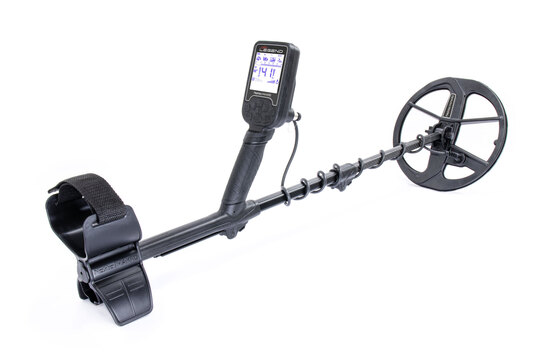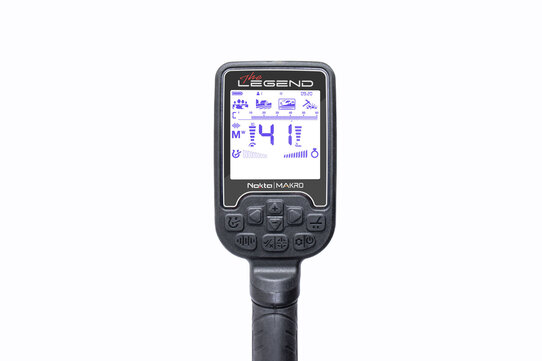
For those that like to know how things work, here’s some information regarding the actual method of metal detecting.
The coil on a metal detector, the thing that actually picks up the metal, sends out an electromagnetic field through the ground, whether that’s sand, dirt or even gravel. That electromagnetic signal will interact with metal objects in the ground sending another electromagnetic field back displayed as a sound and usually a number depending on the machine you use, back to the detectorist via the control panel. The detector can determine how deep the object is based on the strength of the signal it gives. The closer to the surface the object is the stronger the magnetic field. The detector can also determine between different metal types through a process called phase shifting. Phase shift is the difference in timing between the transmitter coil’s frequency and the frequency of the target object. This phase shift also allows the detector to discriminate between metals, aiding the identification of different metals by the detectorist even before he has started to recover the item.


Some detectors produce the same results via a different process called Pulse Induction where short pulses of current through the coil produce a magnetic field which when passing over a metal object produce an opposing magnetic field allowing the identification of the object’s presence.
Alexander Graham Bell invented the metal detector in 1881 based on earlier attempts in the 1840’s and late 1870’s that produced a crude version to identify counterfeit coins. Bell’s invention was used in an attempt to locate a bullet in the chest of US President James Garfield during an assassination attempt. Bell’s attempt failed although he managed to reach a depth of five inches with his design, unfortunately the metal springs in the mattress the President was lying on confused the detector. Though this early model wasn’t anywhere near as advanced as modern metal detectors the principles of its operation are the same and is applied to a multitude of uses today from mobile metal detectors where individuals search for objects in the ground to static detectors used for security such as at airports, prisons and police stations.
Once an object is detected and a small area in which it is located identified a smaller hand held metal detecting device called a pinpointer is used. It enables you to pin point the exact location of the object rather than blindly digging a wider area, damaging the ground more than necessary and potentially the item too. There is a metal detector coil in the pinpointer and the pinpointer is used to search the ground or put in the hole you have dug as a consequence of the metal detecting machine’s identification of an item.

Items we believe are essential to the hobby of metal detecting:
Metal Detector
Pinpointer
Water spray to clean finds whilst out in the field
Finds bag to put your finds in!

Gloves – always protect your hands you do not know what is in the ground
We hope you have enjoyed this insight, any questions do complete our Contact Us form and we will be in touch as soon as we can.
Thank you for reading
The Fun Detectors Team
